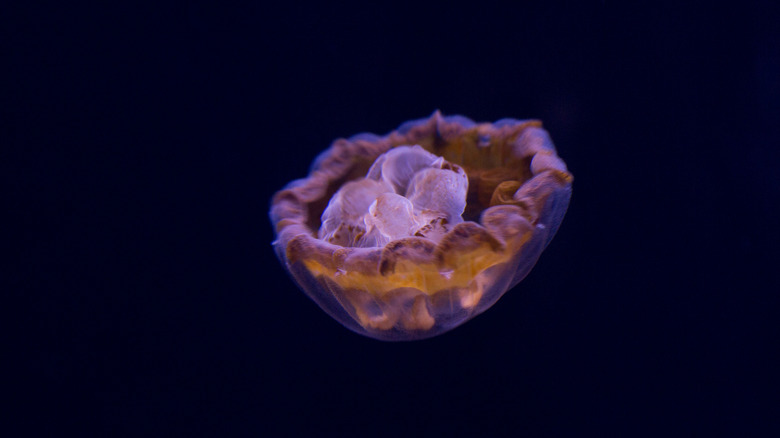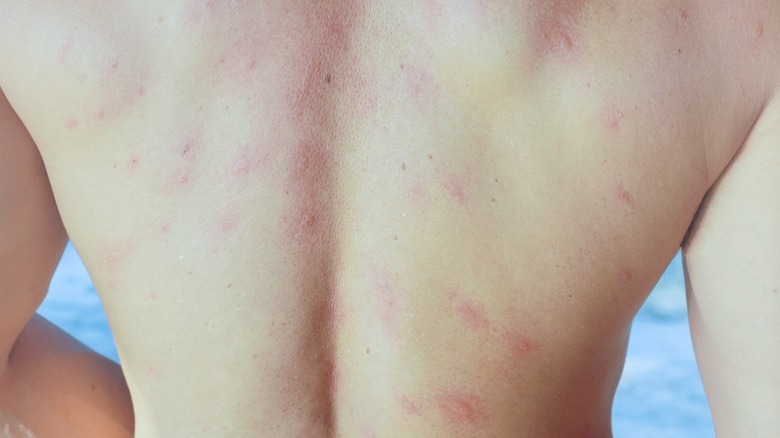Can You Be Allergic To The Ocean?
The ocean is where you go to relax and take a dip in the cold water with the sun shining down on you. It's not a place where you want to develop itchy, red bumps all over your skin from an allergic reaction.
But this is a reality that's a lot more common than you think. While the ocean itself can't cause an allergic reaction (unless you have the extremely rare condition aquagenic urticaria, which is considered to be a water allergy), you can be allergic to certain larvae and parasites that are present in waterbodies.
Swimmer's itch is one such allergic reaction that can potentially occur when you are swimming in the ocean. Additionally, seabather's eruption is another possible concern. Let's take a closer look at what organisms can cause an allergic reaction in swimmers and what you can do to treat and prevent the associated symptoms.
What causes swimmer's itch and seabather's eruption
Also known as "cercarial dermatitis," swimmer's itch happens when you come into contact with microscopic parasites called "cercariae" that can burrow in your skin and die there, creating an allergic reaction.
These parasites start off as schistosomes that infect birds like ducks, geese, and gulls, and other mammals like muskrats, raccoons, and beavers. When the schistosomes lay eggs in their hosts' bodies, these eggs are passed through the animal's excrement, landing in water. In the water, these eggs hatch and produce larvae that go in search of a kind of snail species to multiply in. Once multiplied, the cercariae are once again released, ready to repeat the cycle.
Although cercariae typically don't seek out humans to burrow into, they can mistakenly do that sometimes, which is when swimmer's itch happens.
Freshwater bodies like lakes and ponds where aquatic birds, raccoons, and beavers frequent are hotspots for swimmer's itch, but this doesn't mean it won't happen in the ocean as well.
Sea lice bites occur when thimble jellyfish larvae get trapped under bathing suits and release stinging cells because of being compressed in there, and it manifests as an itchy red rash. First identified off the eastern coast of Florida in 1949, this allergic reaction probably gets its alternate name "seabather's eruption" because of how the stinging larvae erupt under swimwear. It's also called "pica-pica" (itchy-itchy) in Spanish. The rash itself isn't contagious but sharing a bathing suit with larvae still in it can spread it.
Swimmer's itch symptoms, treatment, and prevention
Swimmer's itch, as the name implies, manifests in tingling/burning skin, tiny itchy red bumps, and sometimes blisters, according to Cleveland Clinic. The symptoms can come on immediately or take 12 to 24 hours to appear.
According to Vilas County Public Health Community health educator, Rachael Cornelius (via WXPR), this allergic reaction isn't contagious. "It cannot be spread from person to person. It's just a visible rash on the body. It's small little pustule or papules, if you will, that kind of at face value present on the skin as itchy," she explained. Even though the condition isn't serious, it can be highly uncomfortable, especially since it takes about a week (and sometimes longer) for it to die down.
Showering and towel drying properly right after leaving the ocean is one way to prevent swimmer's itch, and so is being careful which waterbodies you get into. Pay attention to local alerts and areas where there might be shallow or marshy water, where snails might be more prevalent. While you might be tempted to feed the gulls when you're at the ocean, avoiding this habit is one way to make sure those birds don't get attracted to the area. Also, Cornelius added that children are at a higher risk, "just because they are the ones that tend to spend more time in the water, playing in those shallow water areas."
Treating swimmer's itch is about treating the itchy symptoms. Corticosteroid creams, anti-itch lotions, and cool compresses are some ways to get relief.
Seabather's eruption symptoms, treatment, and prevention
Symptoms of seabather's eruption can vary from mild to severe, depending on just how sensitive you are to the stings. According to reporting in The News and Observer, the stings are generally not dangerous. However, a severe allergic reaction can present symptoms like nausea, headaches, fatigue, fever, and chills, in addition to itchy red bumps. It might be a good idea to see a doctor if this happens.
You might be prescribed oral corticosteroids like prednisone to help with the allergy. For mild to moderate cases, you can relieve symptoms with 1% hydrocortisone cream, diluted vinegar, or rubbing alcohol applied on the itchy spots; cold compresses; and pain meds like ibuprofen and aspirin, per Healthline.
Despite the possibility of these itchy and uncomfortable skin rashes, you needn't decide you shouldn't swim in the ocean at all. Taking the necessary precautions, especially in waterbodies that are known to trigger these allergic reactions, might be a better way to navigate the allergies.




